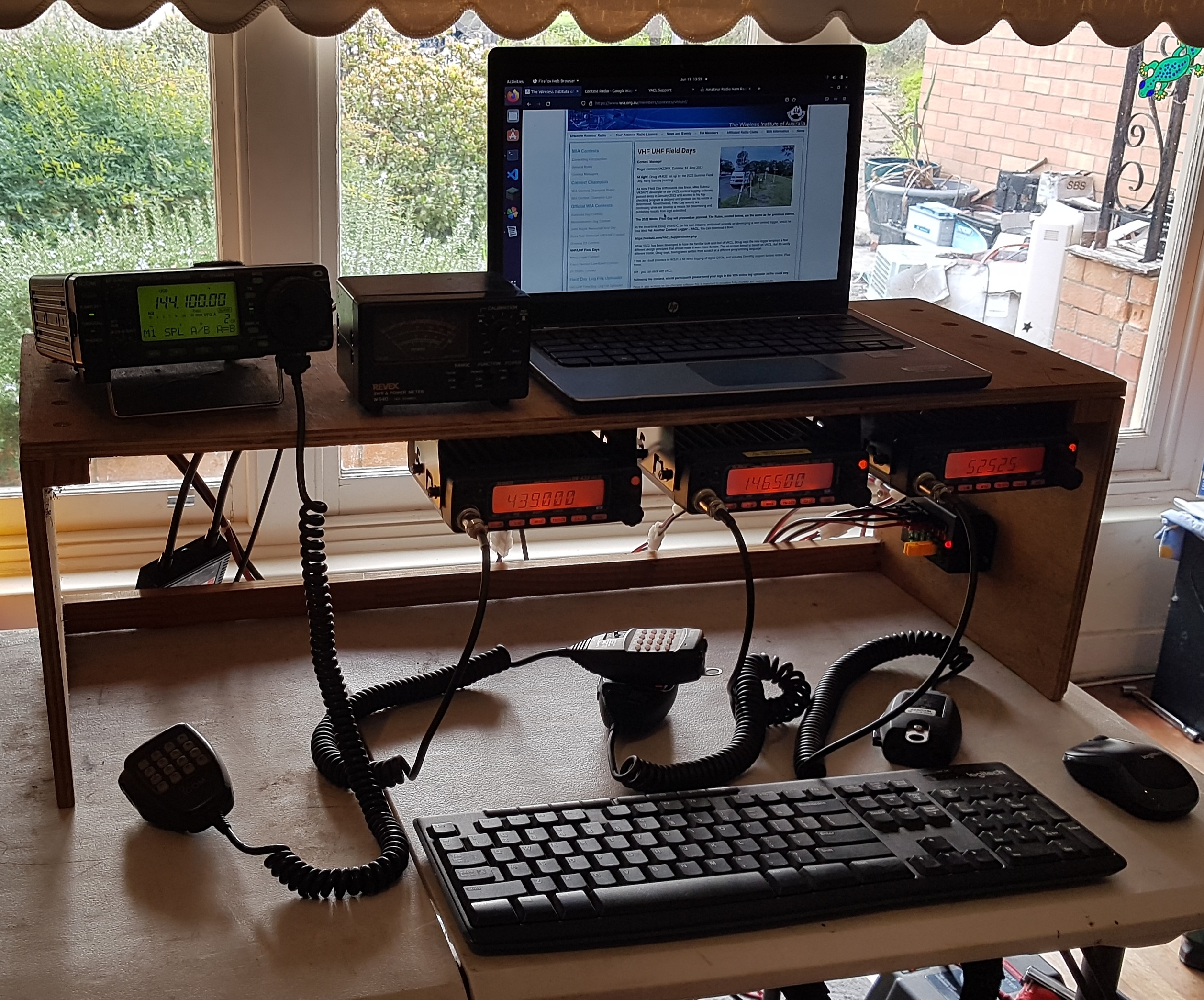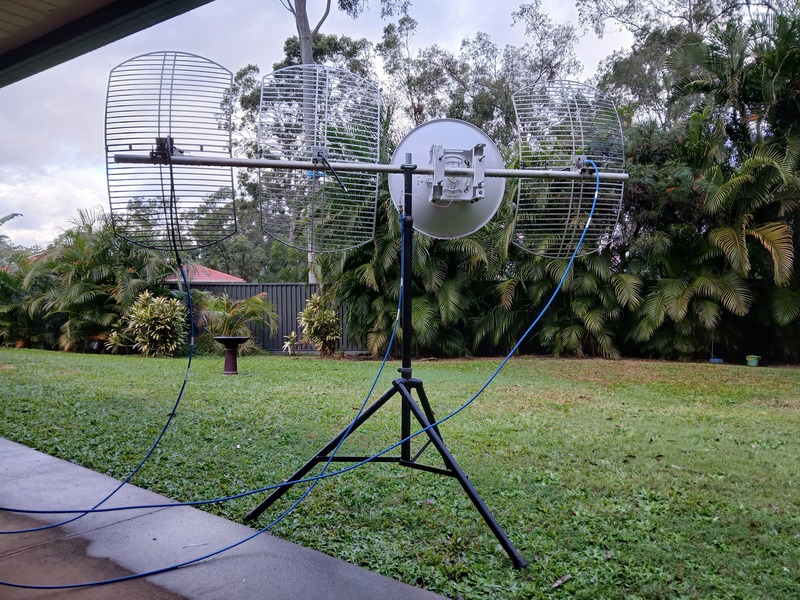Are you into contesting? Have you tried contesting on VHF & UHF? This is a reminder that the Wireless Institute of Australia is running their annual Winter VHF/UHF field day contest next weekend, June 25-26th starting at 0100 UTC (10.30am Australian Central time)
AREG members are planning on being out an about with at least two portable stations and possibly one rover station. If you have a VHF/UHF station at home or are out and about yourselves, why not take a listen and put out some calls on or near the VHF/UHF call frequencies of 52.525, 146.500, 439.000 and 1296MHz for FM (or the equivalents for SSB – see the WIA band plan) and see just how far you can communicate on the VHF and UHF bands!
The rules are available here and further information is available from the WIA Website in the contesting section.

VK5ZM’s portable VHF/UHF Field Day Station
From the WIA Website:
The Field Days provide VHF-UHF operators with the opportunity to “head for the hills” and see how far distant and how many stations they can work.
 The Field Days have separate sections for single and multiple operator stations. The duration of the Field Day is 24 hours, but there are also 8-hour sections for operators who may not be able to camp overnight. Most club stations prefer to operate for the full 24 hours.
The Field Days have separate sections for single and multiple operator stations. The duration of the Field Day is 24 hours, but there are also 8-hour sections for operators who may not be able to camp overnight. Most club stations prefer to operate for the full 24 hours.
The Field Days also generate plenty of activity from home stations, so there is also a separate Home Station section.
All contacts must be simplex: contacts through repeaters or satellites are not allowed. There is plenty of FM activity, but one feature of the Field Days is a high level of SSB activity.
It is possible to do very well with only modest antennas if you pick a good hilltop. Another option, if your station is easily transportable, is to operate from more than one location during the contest period.
Aim Of The Contest
The overriding aim is to get away for the weekend and have fun! But next after that, the aims are:
![]() to encourage more activity on VHF and microwave bands;
to encourage more activity on VHF and microwave bands;
![]() to encourage people to work greater distances than usual by operating portable, and
to encourage people to work greater distances than usual by operating portable, and
![]() to provide opportunities for people to activate or work into new grid squares.
to provide opportunities for people to activate or work into new grid squares.
